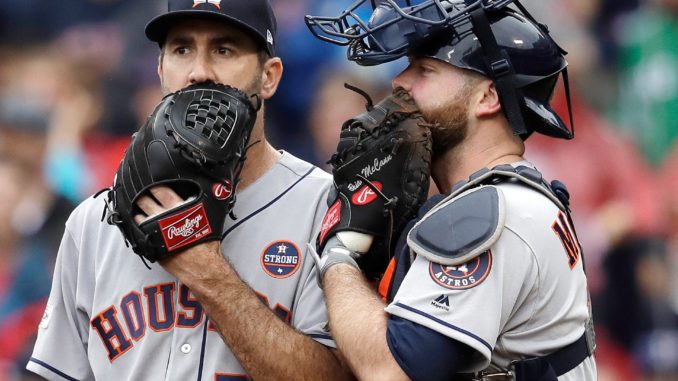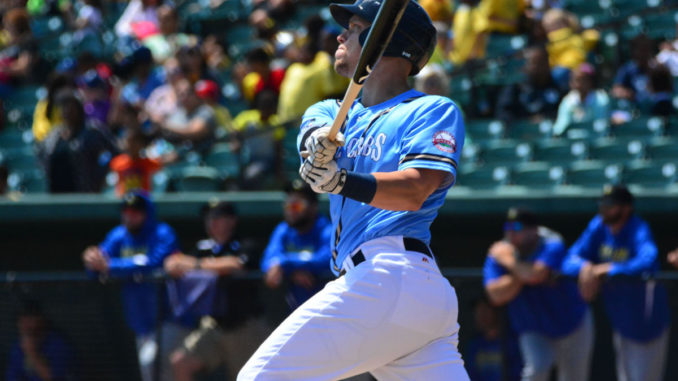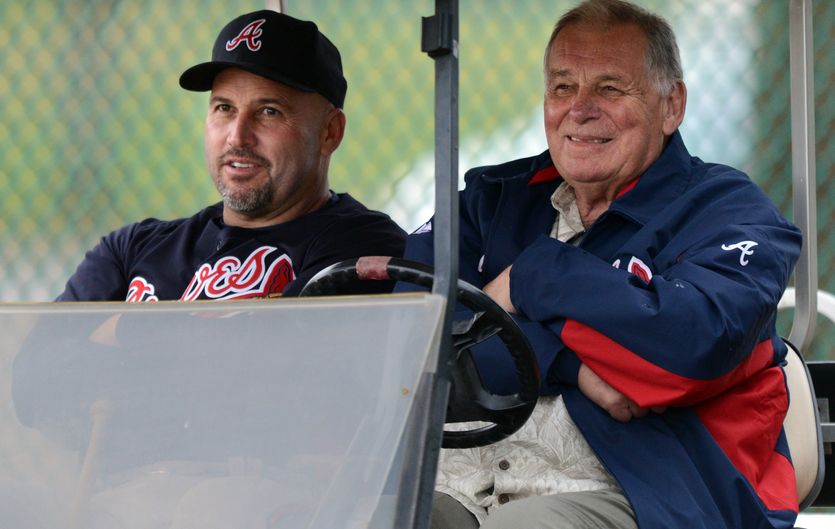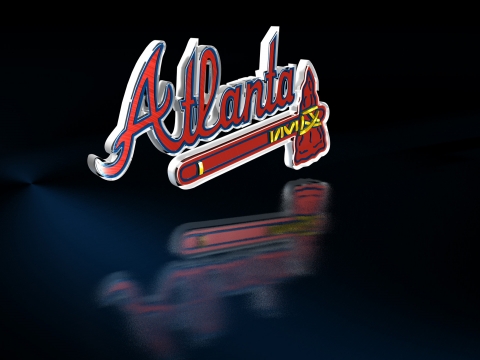
Come gather ’round people
Wherever you roam
And admit that the waters
Around you have grown
And accept it that soon
You’ll be drenched to the bone.
If your time to you
Is worth savin’
Then you better start swimmin’
Or you’ll sink like a stone
For the times they are a-changin’.-Bob Dylan, fan of Catfish Hunter
Baseball typically doesn’t have dozens of rules changes every offseason like the NFL, but change is on the way starting in 2019 and, if the folks in the commissioner’s office have their way, in 2020 and beyond. Some change the economics of the game, some change how rosters are put together, some change the way players can be used, and some proposals fiddle with the very structure of the baseball diamond itself. Hopefully this will help make sense of which ones are here, which ones are coming, which ones are up in the air, and which ones you may see being tested in minor league games.
MLB Changes for 2019
- Pace of Play: Mound Visit Allotment Reduced to FiveAlleged pace-of-play problems are the driving force behind many changes, and limiting mound visits to six per game was instituted in 2018. I can’t recall a single Braves game where either side was in danger of running out of mound visits.
WINNERS: Pitchers that do the hard work of learning the signs.
LOSERS: Pitching coaches hungry for sweet, sweet airtime.
- Pace of Play: Reduced Commercial Break Time
Last season the number of warm-up throws were reduced from eight mandatory pitches to however many the pitcher could throw during the break, which was shortened from 2:25 down to 2:05 for local games. This change further reduces the time to 2:00 for local games and brings the national broadcasts, which were allowed 2:25 down to match it.
WINNERS: Every single man, woman, and child who enjoys watching baseball, either in person or on TV.
LOSERS: Lollygagging pitchers, or pitchers who weren’t given the proper time to warm up in the bullpen because their manager is Gabe Kapler.
- Front Office: No Trades After the July 31 Trade Deadline
Perhaps one of the most confusing aspects of major league baseball was that there could still be trades made after the so-called “trade deadline”, using the mysterious and archaic revocable waiver wire mechanism. You see, shortly after the trade deadline, teams would start putting their entire rosters on waivers, and those that made it through would be eligible… you know what? Never mind, it doesn’t matter anymore. No more trades after July 31, the end.
WINNERS: Reporters and broadcasters, who don’t have to explain August trades anymore.
LOSERS: Lollygagging general managers who want to wait until the last possible minute to determine if they want to buy or sell.
- All-Star Game: Home Run Derby Pay Increased, Champion Purse Now $1 Million
The league will pony up a $2.5 million home run derby purse, with $1 million of that going to the winner of the derby. The league hopes this will encourage more top power hitters to take the risk of screwing up their swings or getting oblique injuries to participate.
WINNERS: Young top power hitters who haven’t gotten into arbitration; they effectively double their salary for the year by participating in the derby.
LOSERS: <insert joke about subjecting oneself to watching the Home Run Derby here>
- All-Star Game: Two-Phase Fan Voting
After the normal All-Star voting free-for-all that starts in April, the top three vote-getters at each position will go into a run-off election that will take place over a 24-hour period to be called, creatively, “Election Day”.
WINNERS: Lesser known players who perform well but didn’t get early votes.
LOSERS: <insert joke about subjecting oneself to watching the All-Star Game here>
- Collective Bargaining: Creation of “Joint Committee”
Perhaps the most significant change is the creation of a committee of player union reps and league officials to start the process of identifying and negotiating future potential rules changes. This keeps lines of communication between the sides more open and lessens the likelihood of either side being surprised by the other.
WINNERS: Anyone who thinks communication is good.
LOSERS: No one, communication is good.
- Arizona Fall League: Schedule Push
Just announced on Tuesday, MLB will start the Arizona Fall League, the premium off-season prospect showcase, several weeks earlier. Opening Day will be September 17, roughly two weeks earlier than in prior seasons. This was done at the request of major league clubs, who wanted minor leaguers rolling off their seasons to go straight in the AFL without a three-week cool-down period.
WINNERS: Players, who will get a longer off-season because the league will finish two weeks earlier than prior years.
LOSERS: Players and fans, who will have to brave the Arizona heat which averages in the mid-90s during the day even in September.
- Arizona Fall League: Player Eligibility Changes
Gone for now are the multitude of restrictions on the types of players that could participate in the AFL. Each team could only send one foreign-born player from a country that has their own winter league — gone, since the earlier schedule will create space between the end of the AFL schedule and the start of most of other winter leagues. Each team could only send one player that ended the year below the AA level. Each team could only send players that weren’t on the disabled list near the end of the season. Each team could only send players that hadn’t had significant major league experience. All of these restrictions are gone.
WINNERS: Players looking to log playing time after being sidelined with injuries. Players from Puerto Rico, Venezuela, Mexico, and the Dominican Republic.
LOSERS: Non-prospects that were selected to go to fill AFL rosters because they fit the old criteria.

Proposed MLB Changes for 2020
In the announcement for the 2019 changes, the league also announced aspirations for further changes in 2020. These are all subject to change, and at least one of these is currently opposed by the player’s union.
- Pace of Play: Substitute Pitchers Must Face At Least Three Batters (Or End of the Inning)
Perhaps the most substantial on-field rule change since the pitching mounds were lowered before the 1969 season, this proposal would require any relief pitcher to face a minimum of three batters in an effort to reduce the down-time taken by managers bringing in relief specialists mid-inning. If the inning is concluded prior to the relief pitcher facing three batters, he can be substituted before the start of the next inning, and there’s also provision for injury. Of note is that the players union has not agreed to this rule change, though the Commissioner’s Office could institute it unilaterally. This is also one of the rules changes that will be tested in the Atlantic League (see section below).
WINNERS: Relievers with negligible splits. Fans of intentional walks.
LOSERS: Relief specialists with extreme splits, who will likely find work much harder to come by.
- Front Office: Active Rosters Expanded to 26 Players from Opening Day through August 31; September Rosters Trimmed to 28 Players
Long expected, this will add 30 jobs in the major leagues so will be popular with the union, which is important because they most certainly will not like the second part of this, shrinking September rosters from a possible 40 players down to 28.
WINNERS: Utility players and defensively-challenged big hitters in the National League.
LOSERS: Prospects, third catchers.
- Front Office: All Players to Be Designated as Pitchers, Position Players, or Two-Way Players; Limits on Number of Pitchers Allowed on Rosters
In an effort to hold the line on the size of major league pitching staffs, MLB is proposing to limit the number of pitchers allowed on the active roster at a given time. Players can be designated as “two-way” players, but will have to have pitched in 20 games and also been in the line-up as a non-pitcher at least 20 times in the season prior.
WINNERS: Utility players and defensively-challenged big hitters in the National League (again). Innings-eaters.
LOSERS: Managers and front offices that would have liked to use that extra roster spot to help keep pitchers fresh and healthy.
- Front Office: Injured List Minimum Increased to 15 Days from 10
This would reverse the rule put in place before the 2017 season that made the 15-day disabled list a 10-day disabled list (re-named this season as the Injury List). This is to combat the practice of having teams abuse the List to keep down pitcher innings. The original purpose of shortening the length of the List was to encourage players with nagging afflictions to not hide those injuries for fear of being sidelined for half a month.
WINNERS: People who hate transactions. Five-man rotation advocates.
LOSERS: Replacement-level relievers, who won’t be able to log as much major league service time. Players who will feel more pressure to play through injuries.
- Front Office: Minimum Minor League Stay for Optioned Players Increased to 15 Days from 10
Similar to the injury list change, this is another effort to keep front offices from shuffling their pitching staffs. Presumably there will still be an exception around being able to recall an optioned player to replace an injured player, but details have not been revealed.
WINNERS: Players without options, typically veterans; with this limitation, the advantage for front offices to keep most of the roster stocked with players that still have options is somewhat lessened.
LOSERS: Young players with options, who will be cooling their heals longer in the minor leagues.
- Product Quality: Limits on Position Players Pitching
Position players will no longer be allowed to pitch except in extra innings and in blow-outs of six runs or greater. 2018 saw an increase in the number of games in which position players were called on to pitch, making a fun oddity from prior seasons into an excruciating slog.
WINNERS: Game integrity, real pitchers, position player’s rotator cuffs.
LOSERS: None. Seriously, no one cares about baseball not only as a sport but as an institution should ever want to see Scott Kingery pitch again.

Experimental Rules In the Atlantic League
In February it was reported that MLB and the independent Atlantic League had entered into an agreement wherein MLB would provide the Atlantic League with logistical support and equip all Atlantic League ballparks with TrackMan radar technology. In return, the Atlantic League will act as a test bed for rules changes, and the first ones up to bat include some doozies.
- Product Quality: Radar-Assisted Strike Zone
Using that TrackMan technology, the umpire will get a notification from the system if the ball actually crossed the plate. It will still be within the umpire’s judgement to determine, based on the hitter, if the pitch was too high or low, and if the batter made an attempt to swing at the pitch. This is the first step to potentially completely automating ball and strike call.
WINNERS: Players, who should get more accurate ball and strike calls.
LOSERS: Umpires, who will no doubt fight tooth and nail against this if this gets instituted in the majors.
- Pace of Play: No Mound Visits By Players Other Than Pitching Changes/Injury
Shortstop wants to notify the pitcher who’s covering second on a pick-off? He’ll have to shout. Catcher and pitcher can’t get together on a sign? Uh-oh. This rule will ban non-pitchers from the pitcher’s mound between plays.
WINNERS: Fans of crossed-up signs.
LOSERS: Pitchers, who will have to find another way to see himself out of a tight spot without the third baseman jogging over to give him an encouraging pat on the butt.
- Pace of Play: Reduced Commercial Break Time
This takes an even more substantial bite out of between-inning downtime, shortening commercial breaks down to 1:45.
WINNERS: Fans.
LOSERS: Pitchers who actually need more than a handful of warm-up pitches, especially if they have been running bases.
- Safety and Scoring: Increase Base Size to 18 Inches (up by 3 inches)
Bases have been 90 feet from one another since the Knickerbocker Rules of 1845, so baseball may be loathe to change that. By increasing the size of the bases however but not changing the location of the anchor, the league can effectively shorten the basepaths by a total of 6 inches. The size of home plate is not effected.
WINNERS: Baserunners; the difference of even six inches could be a significant boon to both stolen bases and potentially beating throws to any base. Ankles, feet, and Achilles’ tendons; more real estate on the bases makes it less likely that baserunners and fielders will get tangled at the bags, keeping spikes away from causing injuries. Slow grounders.
LOSERS: Catchers. Tradition.
- Scoring: Two Infielders Must Be On Each Side Of Second Base When Pitch Is Thrown
In an effort to combat the amount of infield shifting that has become so commonplace, this rule would for the first time mandate the placement of fielders other than the pitcher.
WINNERS: Groundball hitters.
LOSERS: Groundball pitchers. Scouting and analytics. Tradition.
- Scoring: Pitcher’s Mound Moved Back Two Feet
This change will occur in the second half of the season so that there can be easy analysis of results with the same group of hitters. The major league pitching rubber has been located precisely 60 feet and 6 inches from the back edge of the home plate since 1893, though the pitcher’s mound has been raised and lowered to make things easier and more difficult for hitters periodically. Moving the mound back by two feet is designed to combat the rising average velocity that pitchers can bring to bear, increasing the batter’s reaction time.
WINNERS: Hitters, who will have a couple more hundreths of a second to react to velocity. Fans of walks. Baserunners at first base, who will be able to take slightly bigger leads with the mound slightly farther away.
LOSERS: Pitchers, not only due to having the hitters be able to adjust to their pitchers more easily but also due to potentially increased injury risk and having a strike zone farther away. Possibly hitters, as there’s at least some thought that the added distance could add more depth to off-speed pitches. Tradition.
Experimental Rules for Affiliated Minor Leagues
None of these rules are new, they have been in place since at least last season but represent an ongoing experiment and potential changes that could make their way to major league games.
- Game Length: Each Half-Inning Begins With a Runner on Second Base in Extra Innings
Major league teams and minor league operators dislike extra inning games in the minors. Pitchers have to fill more innings. Operators have to play game staff for extra time. I haven’t checked, but I suspect players aren’t fans either. To combat this, last season the league instituted a rule that had been in use in some international leagues and tournaments. The result was was a reduction in the average time of minor league extra inning games by 16 minutes.
WINNERS: Teams that don’t want pitchers throwing innings outside of their carefully maintain algorithms. Minor league operators and staff. Fans of bunts.
LOSERS: Logic. This shouldn’t work, there’s no guarantee that innings won’t continue to end in a tie despite since both sides continue to have the same chance of scoring.
- Pace of Play: Pitch Clock
The minor leagues have been experimenting with a pitch clock since 2015 and colleges using it since 2011. The most current incarnation in AA and AAA gives the pitcher 15 seconds to deliver the baseball when there isn’t a runner on base. If the pitcher fails at this, a ball is called. If the hitter likewise isn’t in the box and ready to hit, a strike is automatically called.
WINNERS: Fans. There is a noticeable briskness about minor league games when the bases are empty that makes it easier for fans (and fielders for that matter) to stay engaged. It has had a carryover effect to the majors, as almost every pitcher called up from the minors sets a quicker pace than established veterans.
LOSERS: Random pitchers and hitters. In the end, the clock is simply an umpiring tool, and it’s subject to the whims or inattention of the umpire. Clock violations are enforced sporadically, and when it does it seems to hit from out of the blue.




Leave a Reply